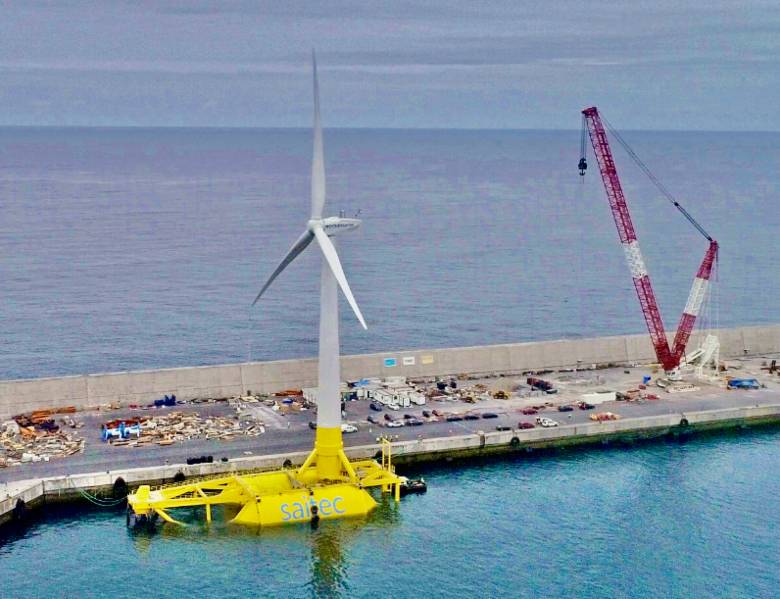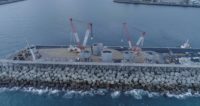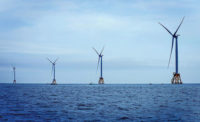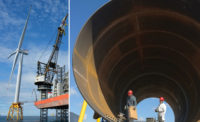Onshore wind energy farms are dotted all over the Spanish countryside, representing one of the nation's largest electricity sources. But with more than 90% of its potential wind energy capacity in deep water, offshore projects are almost totally missing.
Now, with floating technologies gaining ground, Spanish firms are positioning themselves for burgeoning demand at home and abroad.
"Spain has the complete value chain of the offshore wind sector and has the opportunity to become an industrial and technological development hub in this area, especially floating technology," according to Spain's Wind Business Association.
In the 25 years to 2050, the offshore business could be worth well over $40 billion, it estimates.
Spain’s supply chain and construction facilities have grown steadily for more than 20 years since it first embraced onshore wind power. Around 28 GW are now in operation, according to IEA Wind TC, part of the Organization for Economic Co-operation and Development. With development of floating wind technology, Spain is now looking increasingly offshore.
Eighteen months ago, the government set a target of 3 GW of floating wind generation by 2030 plus as much as 60 MW in pre-commercial marine technologies, such as tidal power.
At that time, the plan was described as ambitious by Giles Dickson, CEO of trade group WindEurope. "But with floating offshore wind now coming of age, it is achievable," he said.
Spain's offshore wind capacity could reach 17 GW by 2050, according to Spain's trade group.
Taking a big step in that direction, the authorities this February approved the nation's Marine Space Management Plans, defining offshore areas suitable for wind power development, setting the scene for lease auctions from this year.
Hotspots
The regions of Galicia, Catalunya and Gran Canaria, with roughly 3 GW potential in each, are "hotspots in Spain" for the Norwegian Offshore Wind organization. It is "working to bring Norwegian companies into specific projects in Spain," said Einar Tollaksvik, leader of the trade body's Spanish working group.
Norway's state-controlled energy group Equinor last year joined with Spain's Naturgy Energy Group S.A. to explore the Spanish offshore potential. The Spanish energy company will marry its onshore experience with Equinor's floating offshore expertise. Equinor six years ago started the world’s first commercial floating wind farm, Scotland's 30-MW Hywind.
Other Spanish companies looking for international synergies in floating offshore include Acciona Construccíon S.A. It has joined Denmark’s energy company Ørsted A/S to study large-scale floating foundations made of materials including bio-concrete. The contractor's expertise in infrastructure and renewables "will be key to the success of this agreement," according to Huberto Moreno, Acciona CEO.
"Advancing floating wind technology and bringing it to market is a key strategic aim for Ørsted, and supply chain partnerships are the way to do just that," adds Rasmus Errboe, the Danish company's executive vice-president and CEO for Europe.
This agreement followed a similar one marrying Spanish infrastructure expertise with international energy reach. In February, the construction group Ferrovial S.A. agreed to link with Germany’s large energy company RWE Offshore Wind GmbH to investigate floating prospects off Spain.
“We clearly see the growth opportunities that this sector offers, which is why we have decided to partner with another market leader," noted Gonzalo Nieto, CEO of Ferrovial Energy Infrastructure and Mobility.
 Ferrovial built the concrete floater for the DemoSATH platform for Saitec Offshore Technologies.
Ferrovial built the concrete floater for the DemoSATH platform for Saitec Offshore Technologies. Photo courtesy of Saitec Offshore Technologies
Ferrovial recently built the roughly 120-ft-long cylindrical concrete floaters, with diameters up to 45 ft, forming the floating foundation for the DemoSATH structure developed by Spain-based Saitec Offshore Technologies.
Meanwhile, Spain's large energy utility, Iberdrola S.A., is leading a $27.5-million, four-year European Union project to build the first 10-MW floating installation and bring the cost down to $45-65 per MWh by 2030.
The "Flagship" project, which kicked off in September 2020, aims to start producing an OO-STAR floater at Norway’s Marine Energy Test Center starting this year. France's S.A, an acquired the floater technology, incorporating a central shaft and three vertical buoyancy cylinders last year.






Post a comment to this article
Report Abusive Comment